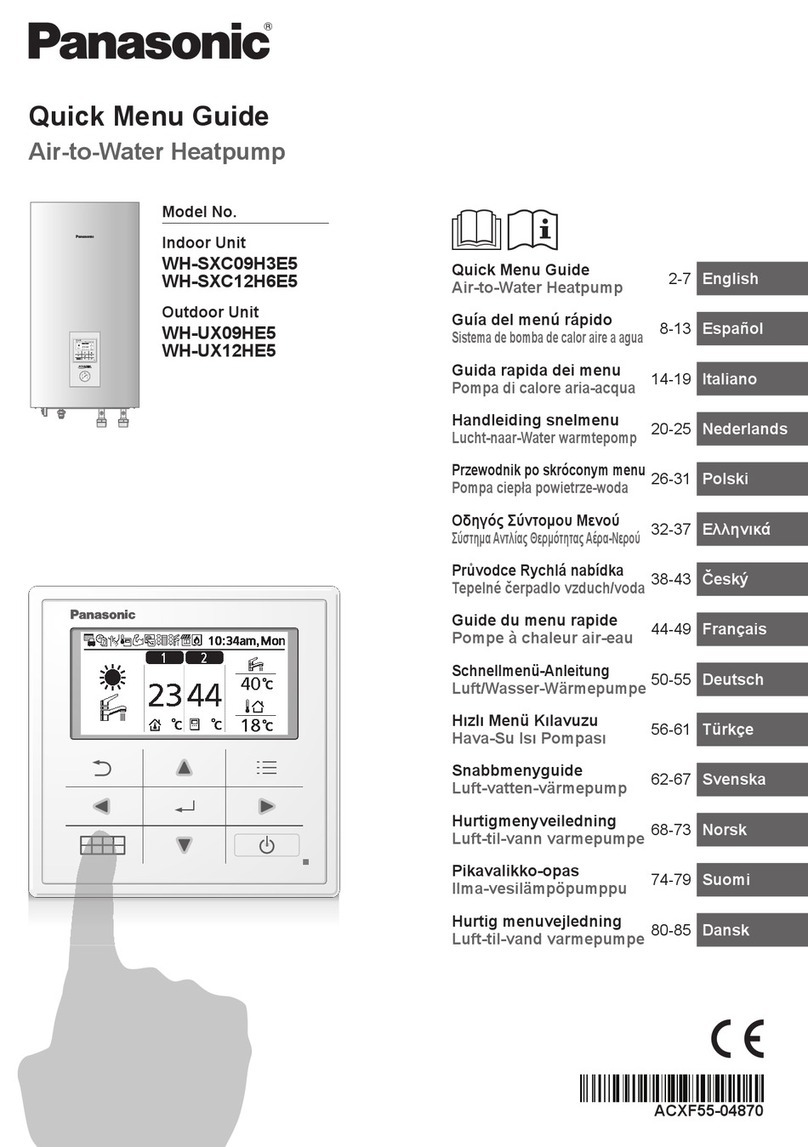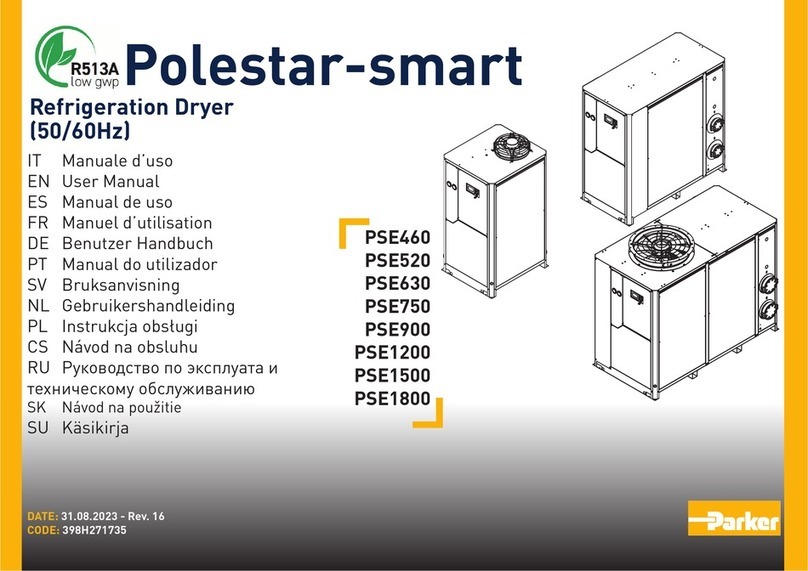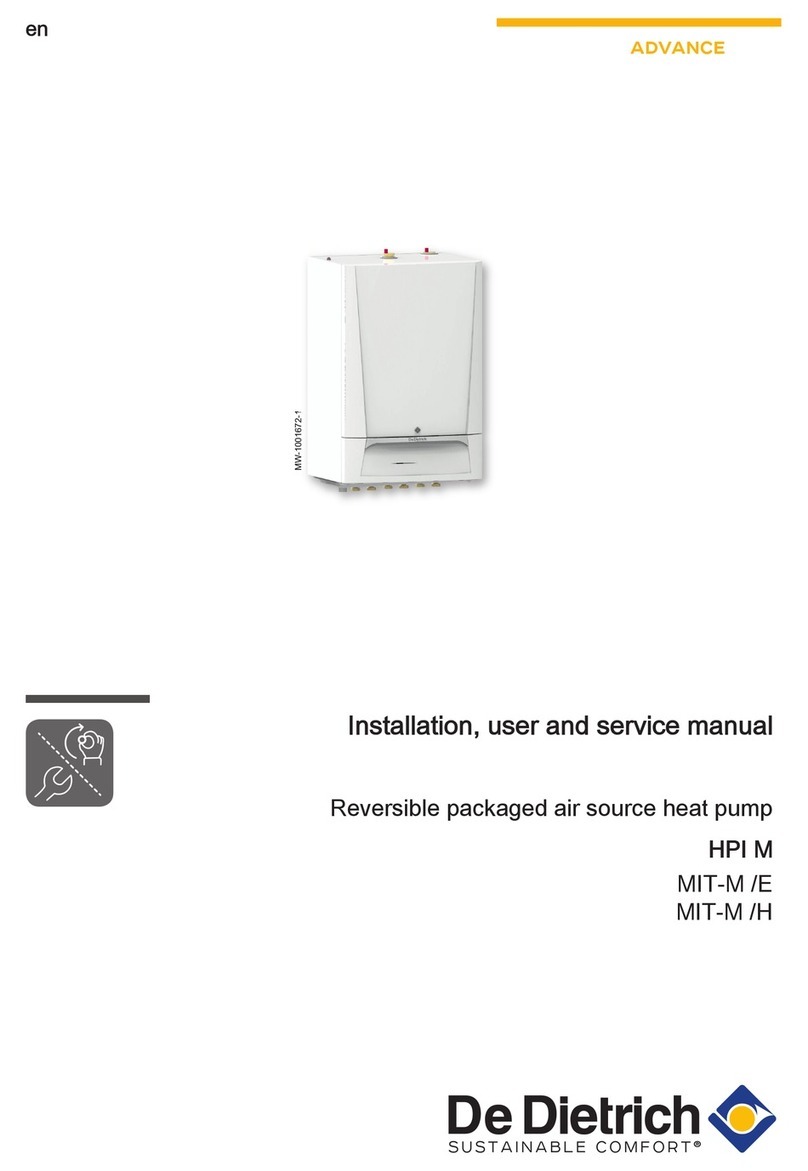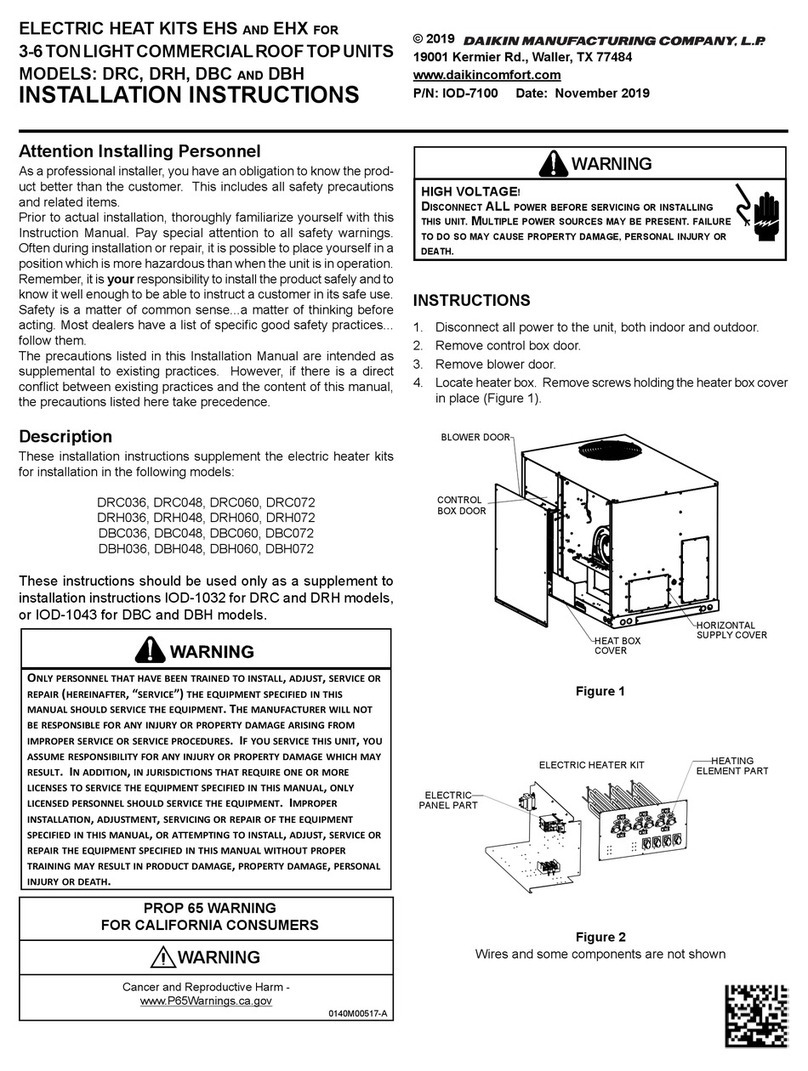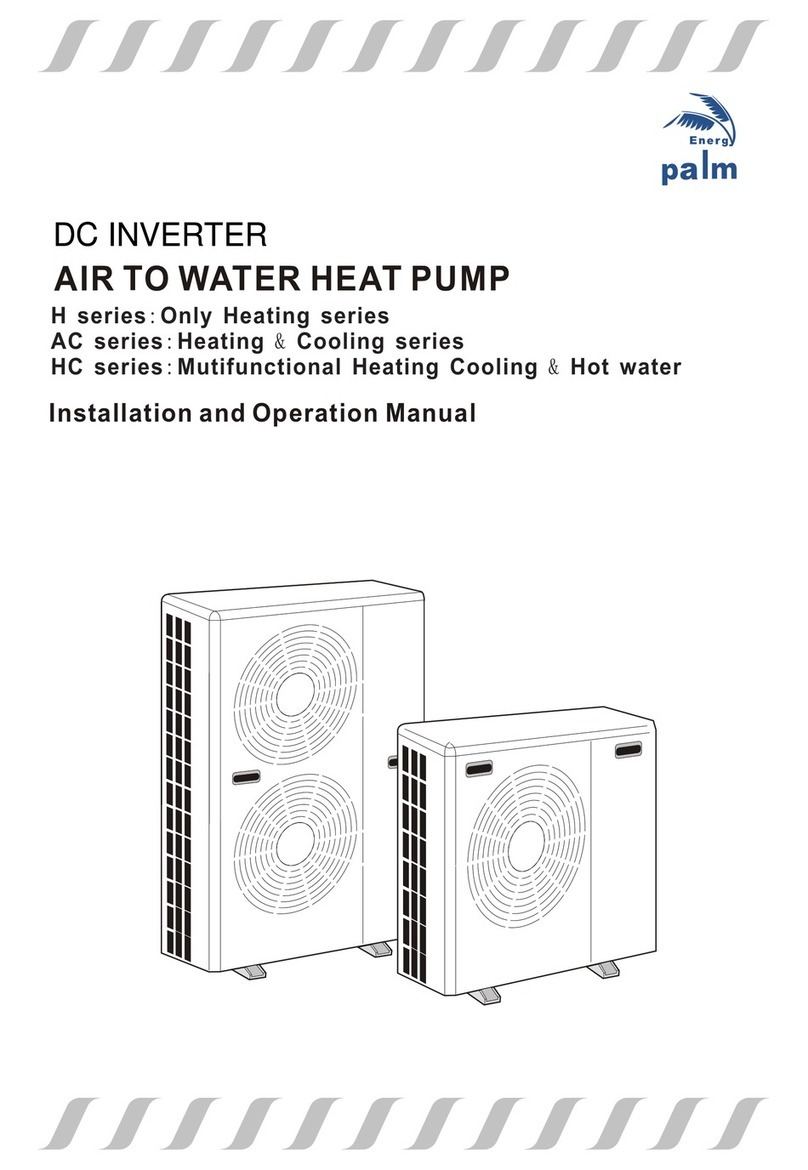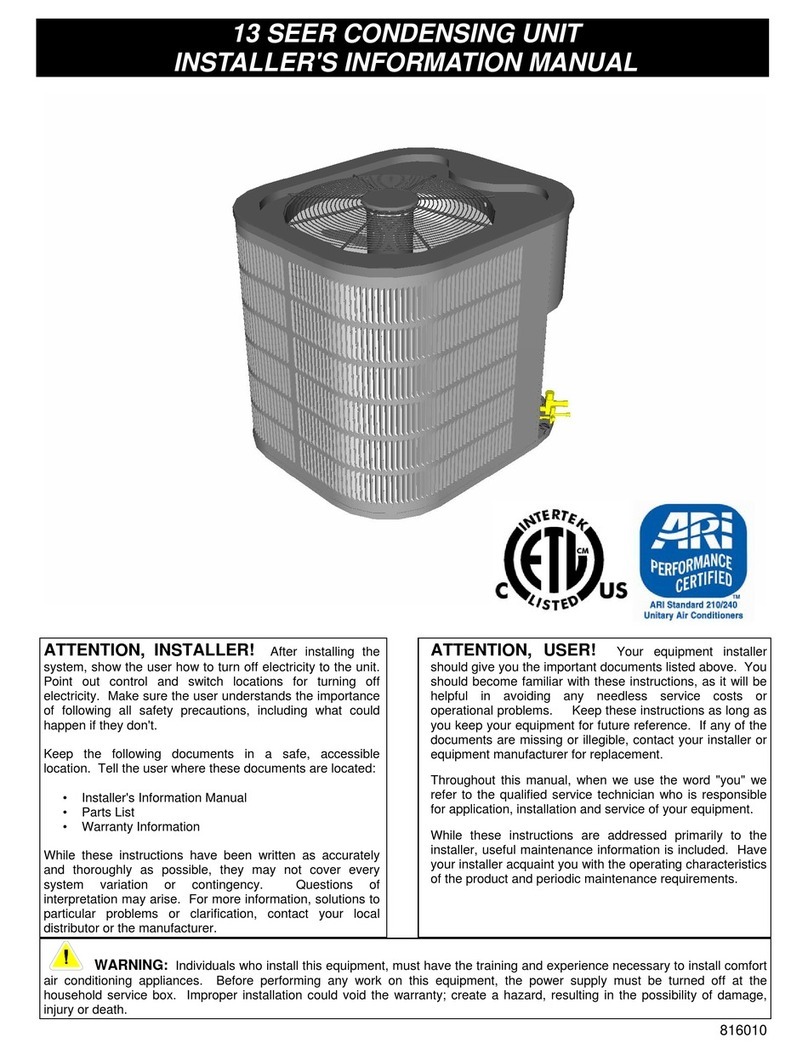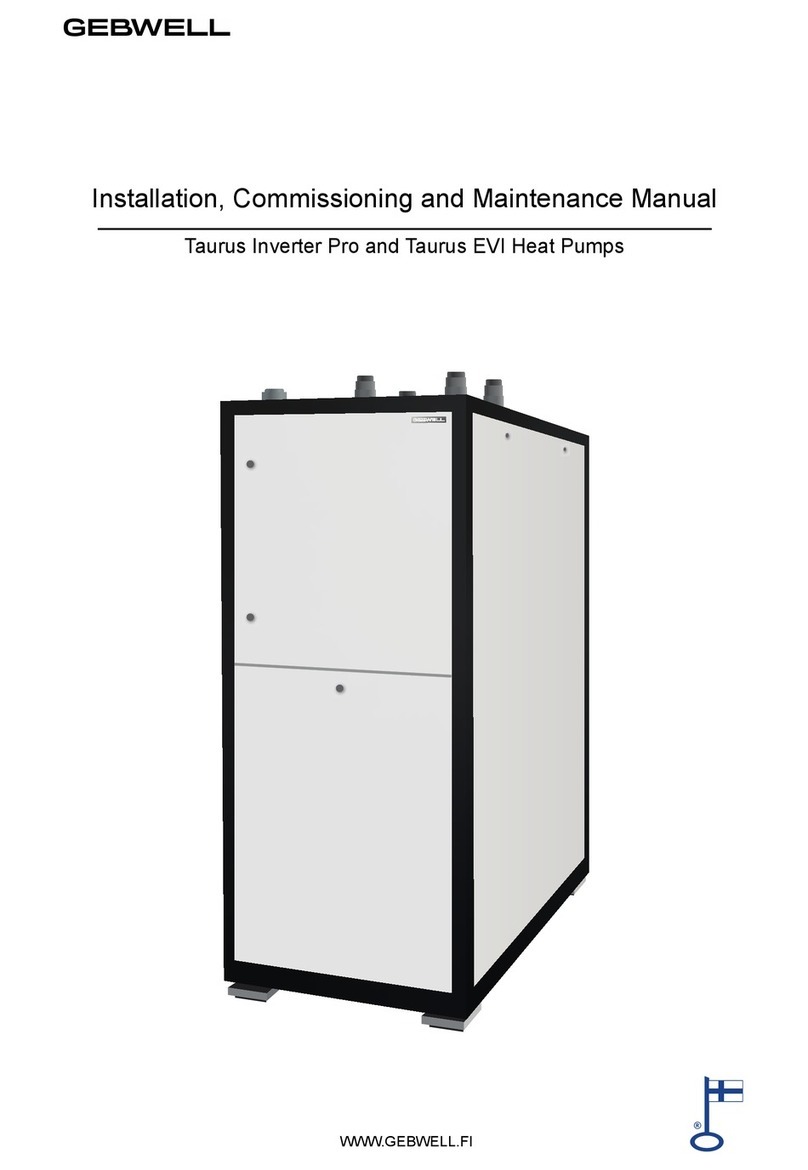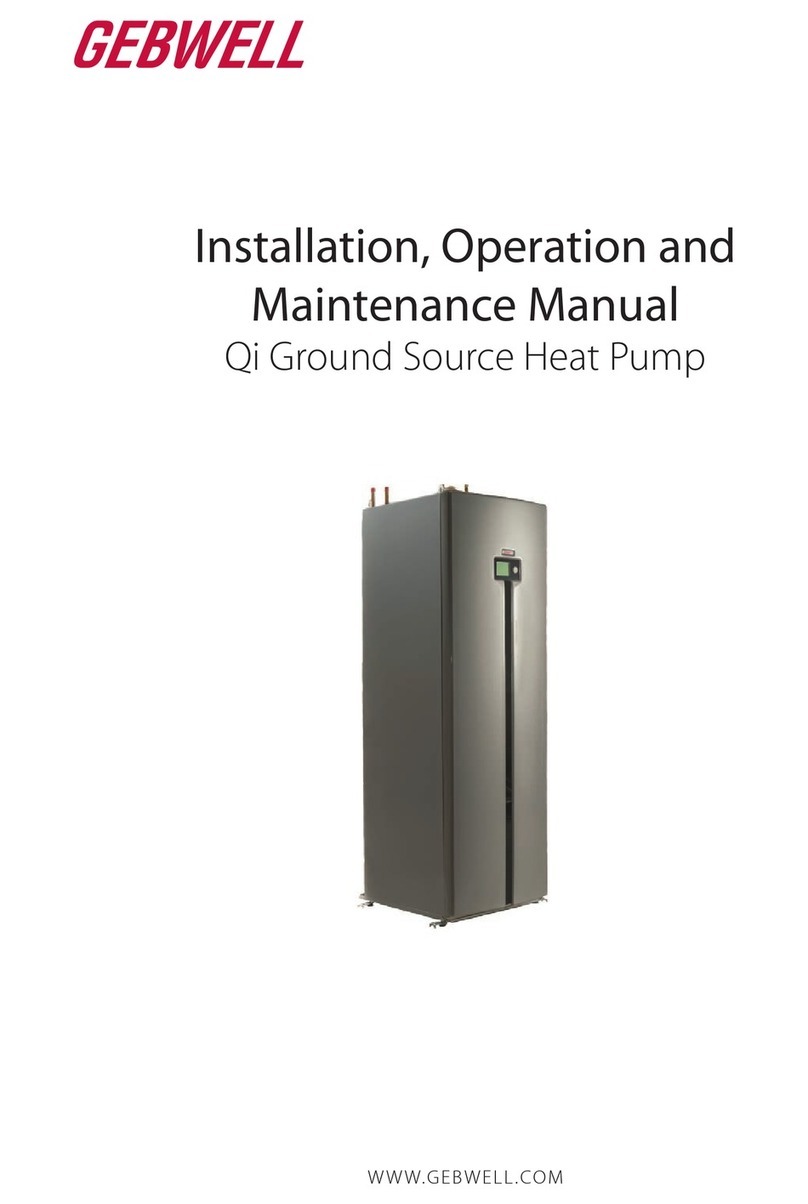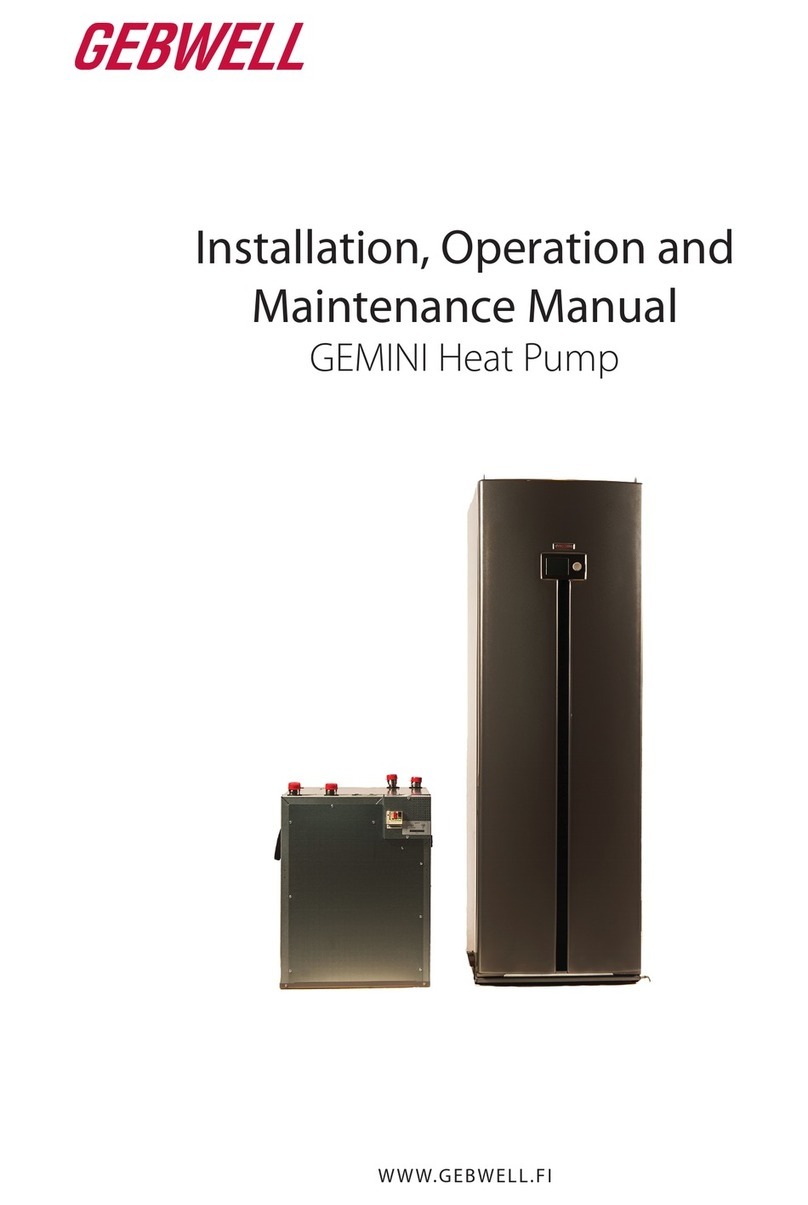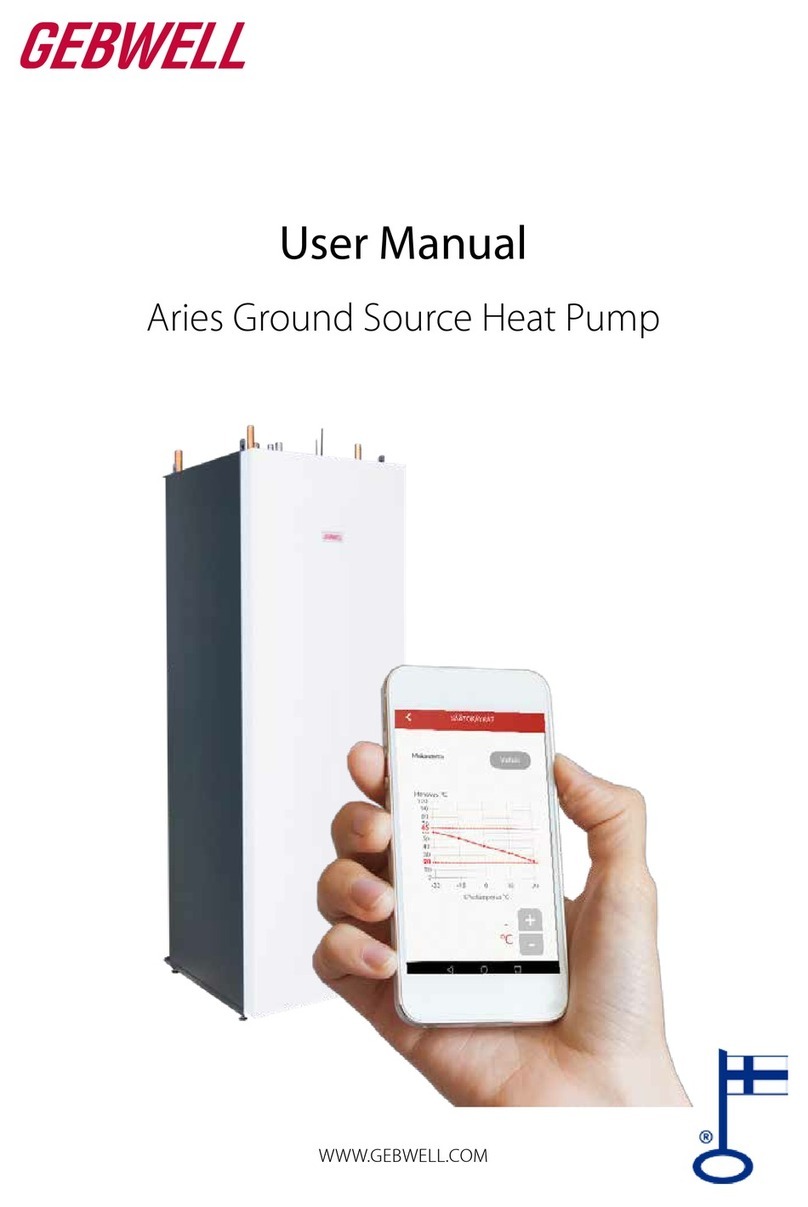
6 Gebwell T² Installation, Operation and Maintenance Manual
1 WARRANTY
Gebwell Ltd.
Patruunapolku 5, 79100 LEPPÄVIRTA, tel 020 1230 800, info@gebwell.fi
issues the product,
T2 heat pump
a warranty regarding manufacturing and material faults, with the following contents.
Warranty period and start date
A two- (2) year warranty will be issued to this product, counting
from the product delivery date.
Two copies of the commissioning and warranty protocol will be
delivered with the heat pump. The installer / reseller of the heat
pump fills the said protocol in and goes over it with the customer.
Both Parties confirm they have gone over the protocol, and
accept the terms of warranty with their signature. The customer’s
copy of the warranty protocol must be stored, and presented on
request. The other copy must be delivered to the factory within
1 month from the product commissioning date. The warranty is
not valid in case the commissioning and warranty protocol has
not been filled in correctly, or if the factory copy has not been
returned to the factory.
Warranty contents
The warranty extends to all manufacturing and raw material
faults that have occurred in this product during the warranty
period, as well as the direct expenses related to the changing of
these devices.
The buyer is responsible for any device malfunctions caused by
the storage conditions between the delivery and commissioning
date (cf. installation, operating and maintenance manual;
storage).
5-year component warranty
In addition to the normal product warranty, a five- (5) year
component warranty will be issued to the heat plate exchangers,
starting from the product delivery date.
The component warranty does not extend to the direct or indirect
expenses caused by the changing of a component. Otherwise, all
terms and limitations of the product warranty apply for the
component warranty, as well.
Warranty limits
The warranty does not extend to the expenses (travel, power
consumption, etc.) caused by a malfunctioning device, the
buyer’s production loss, loss of earnings or other indirect
expenses.
This warranty has been given on the condition that the product
is working in normal operating conditions, and that the operating
instructions are followed carefully. The liability of the guarantor
is limited according to these terms and conditions, and the
warranty does not extend to such damage as the product may
cause to another item or person.
The warranty does not extend to direct personal injuries or
damage to property caused by the delivered product.
The warranty presupposes that the installation has followed all
valid regulations, generally accepted methods of installation and
installation instructions given by the manufacturer of the
product.
The warranty does not extend to or is not valid in case the
product is used in any other way than required by the sizing.
The customer is obliged to perform a visual check on the product
before the installation, and it is not allowed to install a product
that is clearly faulty
The warranty does not cover malfunctions, which have been
caused by
• the transportation of the product
• the carelessness of the product operator, the overload
of the product, the failure of adhering to the operating
instructions or maintenance
• circumstances beyond the guarantor’s control, such as
voltage fluctuations (the maximum range of voltage
fluctuations is +/- 10%), lightning, fire or accidents
other than those caused by the repair work,
maintenance or structural changes done by authorised
resellers
• product installation or positioning on the operating
site, which is in contradiction with the installation,
operating and maintenance manual, or otherwise
incorrect.
The warranty does not extend to the repair of defects that are
insignificant as far as the product’s operating condition is
concerned, such as surface scratches. The warranty does not
extend to the normal adjustments of the product as outlined in
the operating manual, operation training visits, maintenance and
cleaning measures, or such work which is caused by the neglect
of safety or installation regulations or the settlement of this on
the installation site.
The warranty terms outlined in the joint recommendation of the
Association of Finnish Metal and Engineering Industries and the
Finnish Competition and Consumer Authority are observed to
such an extent which has not been separately mentioned above.
The warranty becomes void, if the product is
• repaired or altered without Gebwell Ltd.’s permission
• used for a purpose, for which it has not been intended
• stored in a humid or otherwise unsuitable location (cf.
installation, operating and maintenance manual).





















